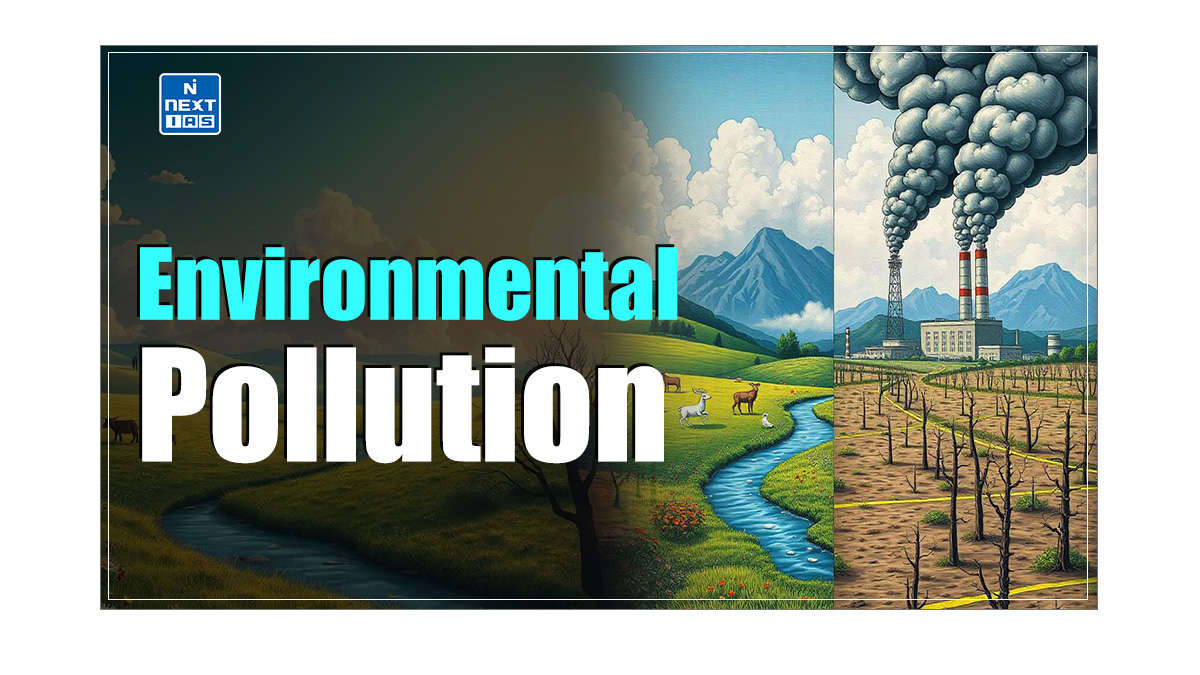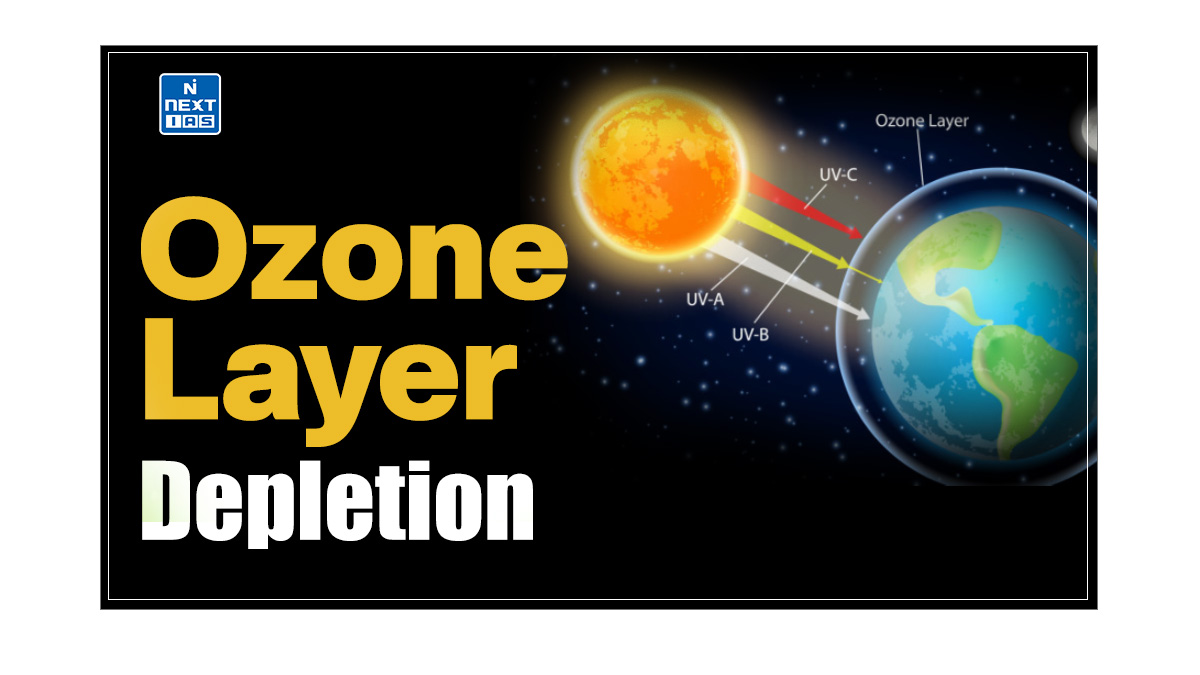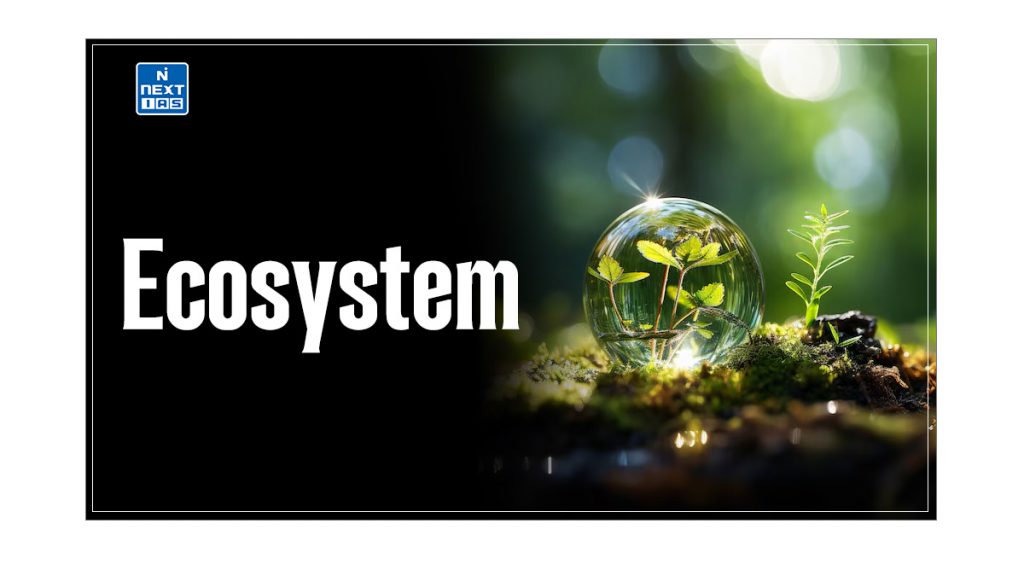
Ecosystems are fundamental units of the natural world, encompassing the interactions between living organisms and their physical environment. A deep understanding of the concept of Ecosystem is crucial, as it forms the basis for numerous topics of environment and ecology. This article aims to study in detail the concept of Ecosystem, its meaning, components, types, functions and other related concepts such as food chain, food web, ecological pyramid, etc.
What is Ecosystem?
- An ecosystem is a functional unit of nature where a community of living organisms interact among themselves and with the surrounding physical environment.
- It varies greatly in size and may be as large as a forest or sea or as small as a small fishpond, which provides a home for plants and other small animals.
Difference between Ecology, Environment and Ecosystem
| Ecology | Environment | Ecosystem |
|---|---|---|
| Ecology includes the study of relationships between living organisms and their environment. | Environment means surrounding in which organisms live. It is the sum total of conditions that surround us at a given point in time and space. | An ecosystem is a functional unit of nature where a community of living organisms interact among themselves and with the surrounding physical environment. An eco-system is a sub-part of Ecology. |
Read our detailed article on the Basic Concepts of Environment and Ecology.
Components of Ecosystem
Various components of an eco-system can be categorised into the following two categories:
Abiotic Components
- The Abiotic Components include the non-living part of the eco-system.
- The Abiotic Components can be further divided into three categories:
- Physical Factors – For example, Temperature, Humidity, Light, etc.
- Inorganic Factors – For example, Water, Oxygen, etc
- Organic Factors – For example, Protein, Carbohydrates, etc.
Biotic Components
- Biotic Components include living being such as plants, animals, etc.
- The Biotic Components are further classified into the following categories:
- Producers or Autotrophs – Those organisms which manufacture their own food. For example, photosynthetic plants.
- Consumers or Heterotrophs – Those organisms which are incapable of manufacturing their own food. For example, Herbivorous, Carnivorous, etc.
- Decomposers or Saprotrophs – These organisms break down Carbon compounds in dead organic matter and release elements into the environment. For example, bacteria, fungi, etc.
Read our detailed article on the Components of Ecosystem.
Types of Ecosystem
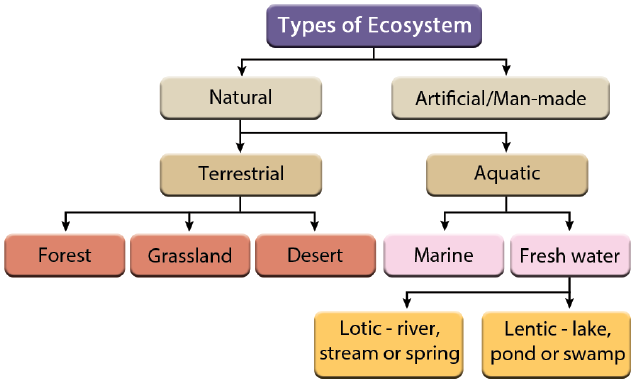
Natural Ecosystem
- It refers to a community of living and non-living organisms, which is purely natural and their formations are not influenced by any human intervention.
- It is solely powered by the solar energy.
- It is of two types: Terrestrial and Aquatic.
Terrestrial Ecosystem
- They are found on the land i.e. the interactions between the living and the non-living parts takes place on the land masses.
- Major terrestrial eco-systems include – Forest, Grassland, Desert, etc.
Read our detailed article on Terrestrial Ecosystem.
Aquatic Ecosystems
- They are the ones wherein interactions among the different organisms and its environment takes place in water bodies.
- They can again be classified in two categories based on their salinity levels – Freshwater and Marine.
Read our detailed article on Aquatic Ecosystem.
Human Modified Ecosystems
- Over the period of time, Human beings have modified and changed the natural environment in response to increasing human population, increasing human needs and changing life styles.
- Human Modified Eco-systems differ from the Natural Eco-systems as Human modified ones may or may not depend on the solar energy for survival, growth and stability.
- For example, in an industry, fossil fuel or electricity is used as the source of energy.
Functions of Ecosystem
- Ecosystems perform a wide range of functions that are vital for the survival of organisms, including humans.
- These functions can be categorised into the following main types:
- Productivity
- Decomposition
- Energy Flow
- Nutrient Cycling
Productivity
- Primary production refers to the amount of organic matter or biomass produced per unit area over a time period by plants through photosynthesis.
- The rate of biomass production is called productivity or primary productivity.
- Primary productivity depends on the inhabiting plant species as well as a variety of environmental factors including photosynthetic capacity of plants and availability of nutrients.
- Thus, it varies from one system to another.
Gross Primary Productivity
Gross primary productivity refers to the rate at which organic matter is produced during photosynthesis.
Net Primary Productivity
Net primary productivity refers to the available biomass for the consumption of heterotrophs (herbivores and decomposers).
Net primary productivity = Gross primary productivity – Respiration
Decomposition
- Decomposition refers to the process wherein decomposers break down complex organic matter into simpler inorganic substances such as nutrients, water and carbon dioxide.
- It is largely an oxygen-requiring process.
Humification
- Humification refers to the process of accumulation of a dark-colored, amorphous substance known as humus, which is highly resistant to microbial activity and decomposes at a very slow rate.
- It occurs during decomposition in the soil.
- Being colloidal in nature, humus serves as a reservoir of nutrients.
Mineralisation
Some microbes further degrade the humus, and the release of inorganic nutrients occurs by the process known as mineralisation.
Energy Flow
- All the components of an eco-system are constantly interacting with each other.
- These interactions lead to the growth and regeneration of plants and animal species for which energy is required.
Read our detailed article on Energy Flow in Ecosystems.
Nutrient Cycling
- Recycling of nutrients is essential for plant growth.
- Some of the important nutrients which keep on recycling include – Carbon, Nitrogen, Water, Phosphorous and Sulphur.
Read our detailed article on Nutrient Cycling.
Ecological Succession
- Ecological Succession is the process of gradual and predictable change in the species structure of an ecological community over a period of time.
- Succession takes place when communities replace one another due to natural or man-made destructions.
- A community starts with a few pioneering plants and animals and evolves through increasing complexity until it reaches a stable or self-sustaining state, known as a climax community.
Read our detailed article on Ecological Succession.
Homeostasis of Ecosystem
- Homeostasis is the dynamic equilibrium among the living members which leads to self-regulation of an eco-system in response to their changing environmental conditions.
- An eco-system maintains a state of equilibrium by regulating their own species structure and functional processes.
- For example, in a grassland, if the number of herbivore species increases, it would lead to depletion of grasses which in turn would create a shortage of food for the herbivores.
- As a result, many of them would die out of starvation. Due to the reduced number of herbivores, the grasses would again reach an optimal level.
Negative Feedback Mechanism
- An eco-system is under delicate equilibrium, reaching to a steady state and resisting the outside forces.
- Whenever there is any disturbance to this equilibrium, a built-in regulatory process is set in motion that helps maintain the eco-system functioning by countering the disturbances.
- This process is known as the negative feedback mechanism.
Ecotone
- An ecotone is the transitional boundary or zone between two eco-systems.
- It has some of the characteristics of each bordering biological communities, and often contains species not found in the overlapping communities.
- It also represents the zone of tension as it has the condition intermediate to the two adjacent eco-systems.
- It is also linear as there is a gradual increase in species composition of one incoming community and simultaneously a gradual decrease in species of the other outgoing adjoining community.
- A well-developed ecotone includes some organisms that are distinct from those found in the adjoining communities.
- Ecotones are considered areas of great environmental importance.
- They may also be considered a habitat of greater genetic diversity and serve as bridges of “gene flow” from one population to another.
- Examples of Ecotone: Grassland (between forest and desert), estuary (between fresh water and salt water), mangrove forests (between marine and terrestrial eco-systems) and river banks (between dry and wet).
Edge Effect
- In some ecotones, the number of species as well as the population density of some of the species are much greater than either of the adjoining communities.
- This influence of the two bordering communities on each other is called the edge effect.
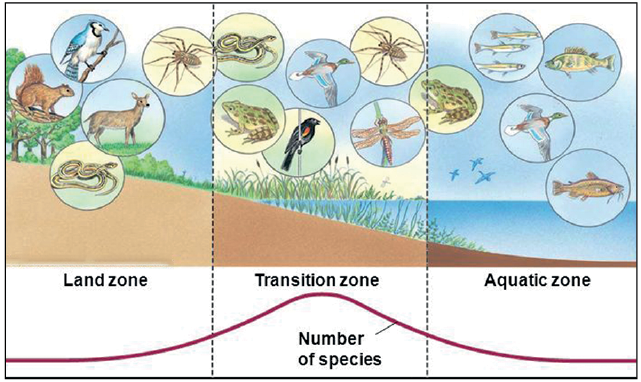
- The organisms which occur primarily or most abundantly in this zone are known as edge species.
- In terrestrial eco-systems edge effect is especially applicable to birds.
- Example: the density of song birds is greater in the mixed habitat of the ecotone between the forest and the desert.
Conclusion
Understanding the basic concepts of the ecosystem is fundamental to gaining insights into the complex interdependencies that sustain life on Earth. By recognising their importance, identifying threats, and advocating for conservation, we can ensure a balanced and healthy environment for future generations.
Frequently Asked Questions (FAQs)
Who coined the term Ecology?
Ernst Haeckel coined the term Ecology.
What is the importance of Ecology?
An understanding of Ecology is crucial to understanding and preserving our environment.
Who is the father of modern Ecology?
Eugene P. Odum is widely regarded as the father of modern Ecology.

